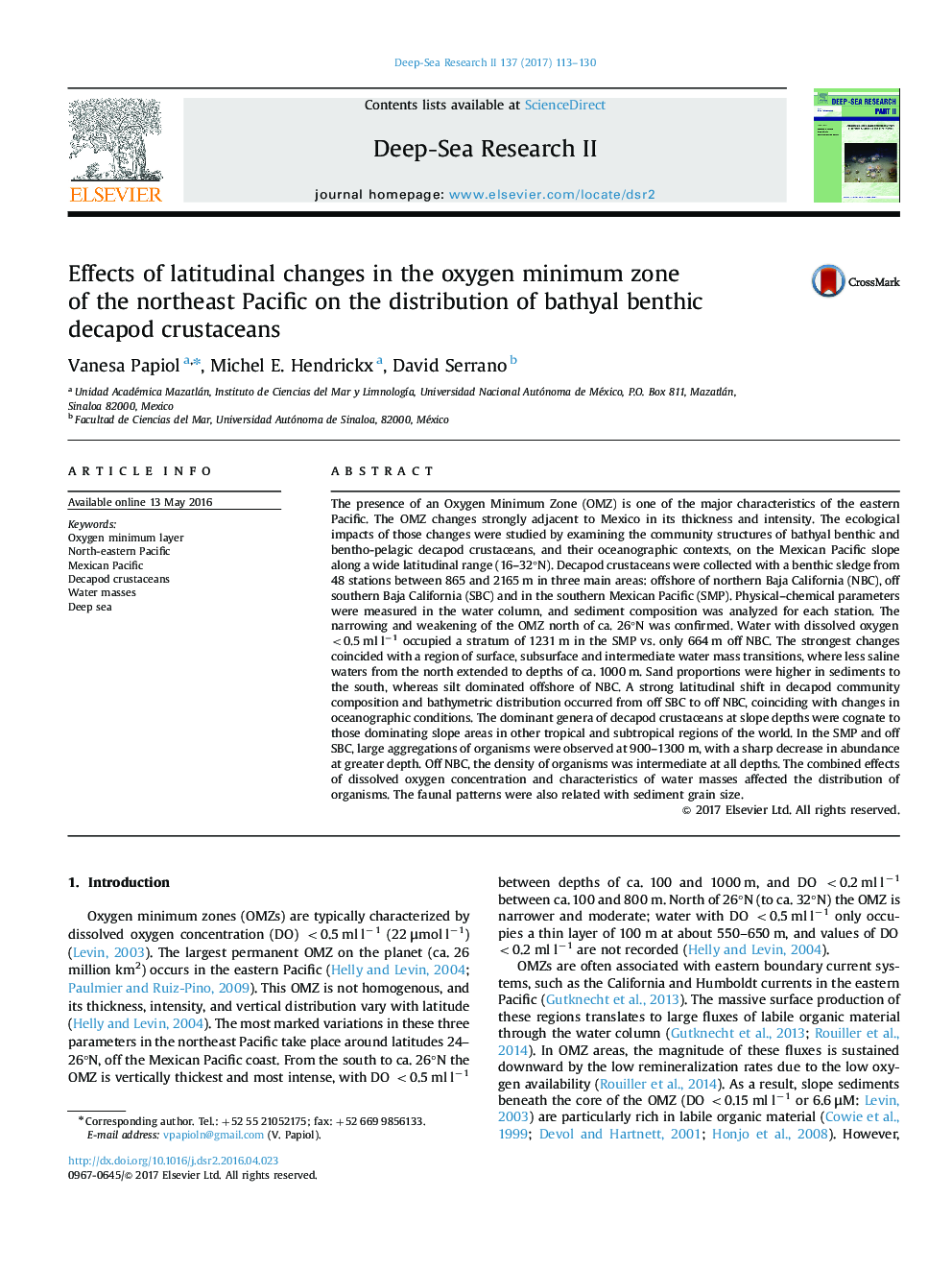| کد مقاله | کد نشریه | سال انتشار | مقاله انگلیسی | نسخه تمام متن |
|---|---|---|---|---|
| 5764823 | 1626405 | 2017 | 18 صفحه PDF | دانلود رایگان |
The presence of an Oxygen Minimum Zone (OMZ) is one of the major characteristics of the eastern Pacific. The OMZ changes strongly adjacent to Mexico in its thickness and intensity. The ecological impacts of those changes were studied by examining the community structures of bathyal benthic and bentho-pelagic decapod crustaceans, and their oceanographic contexts, on the Mexican Pacific slope along a wide latitudinal range (16-32°N). Decapod crustaceans were collected with a benthic sledge from 48 stations between 865 and 2165 m in three main areas: offshore of northern Baja California (NBC), off southern Baja California (SBC) and in the southern Mexican Pacific (SMP). Physical-chemical parameters were measured in the water column, and sediment composition was analyzed for each station. The narrowing and weakening of the OMZ north of ca. 26°N was confirmed. Water with dissolved oxygen <0.5 ml lâ1 occupied a stratum of 1231 m in the SMP vs. only 664 m off NBC. The strongest changes coincided with a region of surface, subsurface and intermediate water mass transitions, where less saline waters from the north extended to depths of ca. 1000 m. Sand proportions were higher in sediments to the south, whereas silt dominated offshore of NBC. A strong latitudinal shift in decapod community composition and bathymetric distribution occurred from off SBC to off NBC, coinciding with changes in oceanographic conditions. The dominant genera of decapod crustaceans at slope depths were cognate to those dominating slope areas in other tropical and subtropical regions of the world. In the SMP and off SBC, large aggregations of organisms were observed at 900-1300 m, with a sharp decrease in abundance at greater depth. Off NBC, the density of organisms was intermediate at all depths. The combined effects of dissolved oxygen concentration and characteristics of water masses affected the distribution of organisms. The faunal patterns were also related with sediment grain size.
Journal: Deep Sea Research Part II: Topical Studies in Oceanography - Volume 137, March 2017, Pages 113-130
